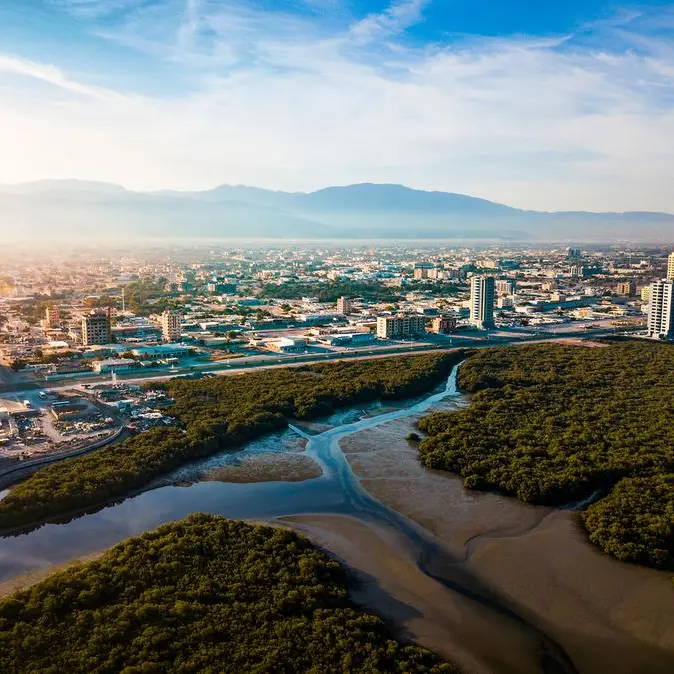Last year's sharp decline in oil prices has exposed the vulnerability of Oman's economy. With one of the highest breakeven oil prices in the GCC, Oman is likely to see a sizeable fiscal deficit this year and the next. Despite this, we expect Oman to avoid deep cuts in spending in the near term, choosing to maintain a supportive fiscal stance. We think that the government can comfortably finance deficits in the near term thanks to its sovereign wealth fund, strong credit standing, and low debt levels.
Real GDP is expected to grow by 4% in 2015 and 3.7% in 2016, driven by a strong non-oil performance. With lower oil prices highlighting the need to diversify the economy, authorities are keen to go ahead with their ambitious projects pipeline. As a result, project spending is expected to remain at high levels, which is seen supporting non-oil growth in the near term. The recent decision to scrap a crude oil production cap and push for a steady rise in oil output will also see growth in the oil sector pick up slightly.
Oman's non-oil growth is expected to remain healthy over the next two years, though it will moderate slightly to around 6%. An ambitious diversification plan will help sustain the upbeat pace in the non-oil economy. Oman's non-oil growth will be primarily driven by its ambition to develop its logistics and tourism sectors and reduce dependence on hydrocarbon revenues.
The government expects to invest OMR 3.2 billion in 2015, of which OMR 1.7 billion will be geared towards non-oil projects. Although slightly less than 2014's spending as weaker revenue prospects may streamline investments, it is in line with past expenditures and reaffirms the government's commitment to implementing its stated development plans.
Current and future government projects intend to capitalize on Oman's topography and geographic location, targeting downstream oil sectors, transportation, and tourism sectors. Unlike its GCC neighbors, the construction sector does not show prominence due to the country's still nascent private sector. A fast growing population, however, could see that changing.
Rapid population growth in recent years driven in large part by strong demand for expat labor has provided support to the real estate sector. The population has grown by 48% since 2010 to 4.1 million in 2014.Of the 1.7 million expats residing in Oman, 1.6 million of them are actively employed by the private sector. As a result, the real estate sector accounted for 10% of nominal GDP in 2014, up 6.3% year-on-year, driven by increases in rents and activity.
Resident private credit activity will continue to benefit from Oman's healthy non-oil outlook. Private credit to the non-financial sector grew by 12.5% in 2014, driven by lending to construction and manufacturing, while personal loans increased by 9.5%. As a result, private credit growth in Oman kept a strong pace in 2014, averaging 9.5%.This pace has been maintained through February 2015, as it is expected to do throughout 2015 supported by robust economic activity.
With oil prices at current levels, authorities have sought to soften the impact by bolstering oil and gas output through a focus on development. As a first step, the cap imposed on oil output was scrapped and upstream hydrocarbon development prioritized. Output in the oil and gas sector is expected to pick up slightly over the next two years, averaging growth of 0.8%.
Crude oil production averaged 943,000 barrels per day (b/d) in2014, up a mere 0.2% year-on-year (y/y). The government is targeting crude and condensate output of 980,000 b/d in 2015, in an effort to offset lower oil prices. Most of the boost in output will be dependent on Petroleum Development Oman (PDO), the state's largest producer, responsible for 69% of average daily production. PDO output had been capped at 570,000 b/d until the recent request by the oil minister to increase production to 600,000 b/d by 2019 and maintain that level for the following 10 years.
In an effort to support the continued development of the oil sector, Oman is looking to spend OMR 1.5 billion on oil and gas projects in 2015, up from 2014's expenditures of OMR 1.2 million. Its current expansion plans target total oil output of 1 million b/d in the next year or two. Investment will focus on the development of PDO's fields and enhanced oil recovery (EOR) activities.
Gas production, on the other hand, is expected to remain steady for the next two years, but will see a large boost once the BP Khazan project comes online in 2017. In the meantime, gas supply continues to lag behind demand in the sultanate. With Oman relying heavily on gas for oil extraction and electricity at its two main power generators, and power demand seen growing at 7-8% per year until 2020, the natural gas gap is expected to grow. The gap is being addressed by gas imports from Qatar, while talks with Iran on building a new gas pipeline aim to help meet future demand growth.
The Omani government is expected to post a deficit this year and the next owing to lower oil prices and modest increases in oil production. The 2015 budget, based on an oil price of $75-$80 per barrel, estimates a deficit of OMR 2.5 billion. A deficit of OMR 4 billion is more likely given that oil prices are lower than official projections; also, expenditures are seen remaining elevated in pursuit of the country's development goals and politically sensitive expenditures are maintained.
Hydrocarbon revenues contracted by 3.9% in 2014 to reach OMR 13.7 billion, leading Oman to post a deficit of 1.2% of GDP. Omani crude oil averaged $103.7 per barrel in 2014.Oman's breakeven price of oil is estimated at $105-110.
Oman is well equipped to handle the strain on its budget. In addition to drawing on reserves and donor grants, the government will likely seek funding from debt markets and international lenders taking advantage of its low debt levels and healthy credit rating to support spending. The Central Bank of Oman plans to borrow OMR 600 million this year on behalf of the treasury. Included is the country's first ever sukuk, planned for mid-2015.
The government may also take other steps to ease the burden on its purse. Oman recently cut natural gas subsidies to some industrial producers. Further subsidy cuts are also being considered with the focus on consumer goods and energy. Energy subsidies accounted for 74% of the OMR 2 billion spent on subsidies in 2014.The government is also looking to privatize some public sector companies in the oil sector.
Consumer price inflation is expected to remain modest over the next two years as inflationary pressures remain subdued. Inflation is seen averaging around 1% in 2015 and 2.5%in 2016. The strong US dollar and OMR will help contain imported inflation, as will lower international food prices. Some upward pressure will come from the robust growth in population and healthy non-oil activity. Pick-ups in domestic demand, wages, and the consumption of services and real estate are expected.
The current account balance is projected to shift into deficit in 2015 and 2016 following the sharp drop in oil prices. Weaker oil prices will more than offset the decline in import prices, driving the trade balance into deficit. The services deficit will continue to expand, albeit at a slower pace as projects aimed at boosting tourism and transport come to fruition. Meanwhile, further growth in the expatriate population will see remittances grow, thus widening the transfers deficit.
Omani stocks were heavily affected by the decline in global oil prices along with equities across the GCC. Concern about the sustainability of the government's fiscal situation and the economic outlook drove stocks lower in 2014, erasing all gains made earlier in 2014. The index has recovered somewhat since.
© Arab Times 2015











